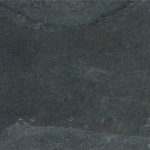Exploring the Beauty and Versatility of Cultured Sandstone
Introduction: Sandstone has been a popular building material for centuries due to its natural beauty and durability. In recent years, a new innovation has emerged – cultured sandstone. Cultured sandstone combines the timeless appeal of natural sandstone with modern manufacturing techniques, resulting in a versatile and sustainable building material. In this article, we will explore the characteristics, uses, benefits, and production process of cultured sandstone. Characteristics of Cultured Sandstone: Cultured sandstone is a man-made material that replicates the look and feel of natural sandstone. It is composed of a blend of natural aggregates, cement, and pigments, which are mixed together to create a material that closely mimics the appearance of natural sandstone. Cultured sandstone is available in a wide range of colors, textures, and finishes, allowing for endless design possibilities. One of the key characteristics of cultured sandstone is its consistency and uniformity. Unlike natural sandstone, which can vary in color and texture from one piece to another, cultured sandstone provides a consistent look throughout a project. This uniformity makes it easier to work with and ensures a cohesive aesthetic in the final design. Uses of Cultured Sandstone: Cultured sandstone is a versatile material that can be used in a variety of applications, both indoors and outdoors. Some common uses of cultured sandstone include: 1. Cladding: Cultured sandstone is often used as a cladding material for building facades, walls, and columns. Its natural appearance adds warmth and character to any exterior design. 2. Flooring: Cultured sandstone tiles are a popular choice for indoor flooring due to their durability and aesthetic appeal. They can be used in kitchens, bathrooms, living rooms, and other high-traffic areas. 3. Countertops: Cultured sandstone countertops are a stylish and practical choice for kitchens and bathrooms. They provide a durable and easy-to-clean surface that adds a touch of luxury to any space. 4. Landscaping: Cultured sandstone pavers and blocks can be used to create stunning outdoor spaces, including patios, walkways, and retaining walls. Their natural appearance blends seamlessly with the surrounding landscape. Benefits of Cultured Sandstone: There are several advantages to using cultured sandstone in construction and design projects. Some of the key benefits of cultured sandstone include: 1. Cost-effective: Cultured sandstone is generally more affordable than natural sandstone, making it a cost-effective alternative for projects with budget constraints. 2. Lightweight: Cultured sandstone is lighter in weight than natural sandstone, making it easier to transport, handle, and install. This can result in lower labor costs and reduced installation time. 3. Customizable: Cultured sandstone can be customized in terms of color, texture, and size to meet the specific requirements of a project. mosaic tile of customization allows for greater design flexibility and creativity. 4. Low maintenance: Cultured sandstone is a low-maintenance material that is resistant to stains, scratches, and fading. It does not require sealing or special cleaning products, making it easy to care for and maintain over time. Production Process of Cultured Sandstone: The production of cultured sandstone involves a series of steps that combine natural aggregates, cement, and pigments to create a material that closely resembles natural sandstone. The production process typically includes the following stages: 1. Raw Materials: The main ingredients used in cultured sandstone production include natural aggregates such as sand, crushed stone, and gravel, cement, water, and pigments. These raw materials are carefully selected to ensure the desired color and texture of the final product. 2. Mixing: The raw materials are mixed together in precise proportions to form a homogenous mixture. The mixing process is critical to achieving the desired consistency and quality of the cultured sandstone. 3. Molding: The mixed material is poured into molds of various shapes and sizes to create the desired products, such as tiles, pavers, or blocks. The molds are carefully designed to replicate the natural texture and appearance of sandstone. 4. Curing: The molded products are allowed to cure and harden in a controlled environment for a specific period of time. This curing process ensures that the cultured sandstone achieves the necessary strength and durability. 5. Finishing: Once the cultured sandstone has cured, it is removed from the molds and undergoes finishing processes such as cutting, polishing, and sealing. These finishing touches enhance the appearance and performance of the final products.  Conclusion: Cultured sandstone is a versatile and sustainable building material that offers the beauty and durability of natural sandstone with added benefits such as cost-effectiveness, customizability, and low maintenance. Whether used for cladding, flooring, countertops, or landscaping, cultured sandstone provides endless design possibilities for both indoor and outdoor applications. By understanding the characteristics, uses, benefits, and production process of cultured sandstone, designers, architects, and builders can harness the potential of this innovative material to create stunning and long-lasting architectural projects.
Conclusion: Cultured sandstone is a versatile and sustainable building material that offers the beauty and durability of natural sandstone with added benefits such as cost-effectiveness, customizability, and low maintenance. Whether used for cladding, flooring, countertops, or landscaping, cultured sandstone provides endless design possibilities for both indoor and outdoor applications. By understanding the characteristics, uses, benefits, and production process of cultured sandstone, designers, architects, and builders can harness the potential of this innovative material to create stunning and long-lasting architectural projects.